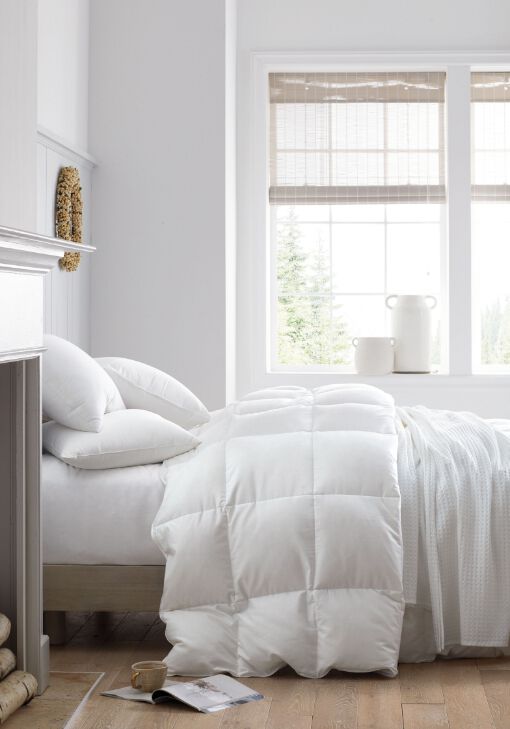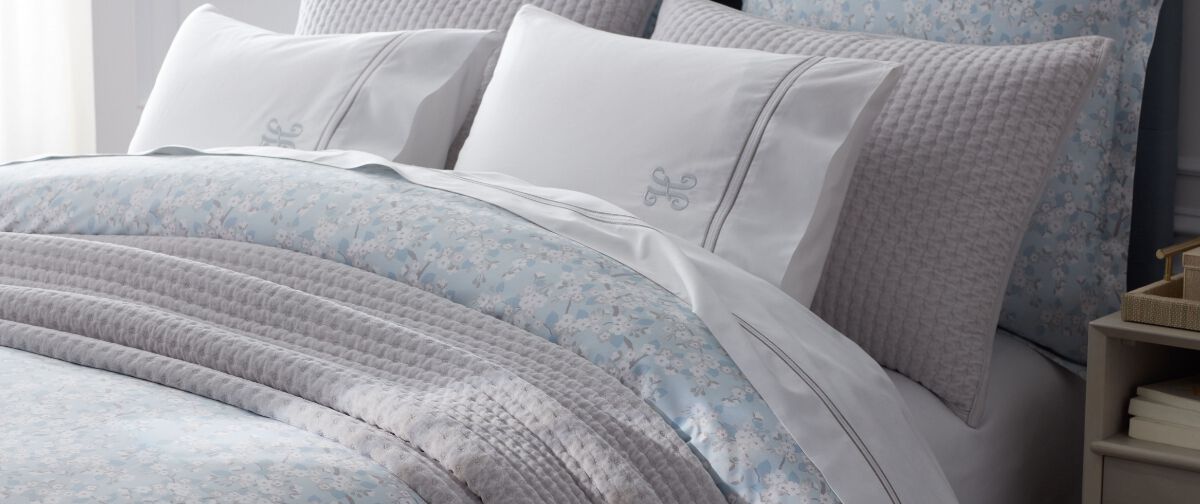How to Choose the Best Comforter Weight for Cold Winter Nights
A comforter is the snuggliest option for cold winter nights, but how do you choose the right warmth level to keep you cozy when the mercury drops? Consider options for fill type and weight to find the warmest comforter for blustery weather, then layer all your favorite bedding pieces to create a cozy, comfy nest. Follow our top tips for choosing the best comforter for chilly winter nights.
What Is the Best Comforter for Cold Weather?
The best comforter for cold weather is the warmest comforter, but how warm is warm enough? Personal preference and local climate both impact the best choice: Medium warmth comforters and duvet inserts are suitable in areas with little temperature fluctuation, but in places with cold winter temperatures, you may want a more robust option. While hot sleepers may be satisfied with an all-season comforter even in the depths of winter, cold sleepers should consider an extra-warm comforter for the coziest option.
Down Versus Down Alternative Fill: Which Is Warmer?
Both down and down alternative comforters are lofty and warm, but down may weigh slightly less than synthetic, down-free fill. We source top-quality down and down-free fill materials, so you get more warmth in every ounce regardless of which you choose.
What Weight Comforter Is Best for Winter?
Comforter weight often refers to the warmth level, rather than the bedding’s physical weight. To find the best comforter for winter, our warmth rating is your best guide. We carry Light, Medium, Extra Warm, and Ultra Warm comforters so you can find the perfect option in any season. Even our warmest comforters are lightweight and breathable, so you stay cozy—and comfortable—all night.
The weight of a down comforter is indicated by its fill power, a measurement of the down itself: Generally, the higher the fill power, the fluffier the down; the fluffier the down, the more insulation it delivers per ounce. While there’s more to fill power than the number—like the quality and type of down—this is an example of how fill power relates to comforter warmth.

| Lightweight | Medium | Extra Warm | Ultra Warm |
|---|---|---|---|
| Summer Weight | All-Season | Chilly Nights | Winter Weight |
| Low Fill Power | Medium Fill Power | High Fill Power | Highest Fill Power |
Quick Tip: A heavy comforter isn’t always the warmest comforter. High-quality comforters are often filled with a high fill power down—so you get more warmth with less weight.
How to Layer the Bed for Added Warmth
Your comforter isn’t the only option for warmth: Mix and match additional winter-ready bedding pieces for even more comfort. For restful nights, combine your favorite pieces of bedding from top winter picks.

- Mattress Pad or Topper: A heated mattress pad offers an extra-warm base layer, or opt for a plush featherbed topper or breathable, insulating wool pad.
- Warm Sheets: Opt for fuzzy flannel sheets or a tight sateen weave—both are favorite choices for making the bed in winter. While optional, a flat sheet adds a touch of extra warmth to the bed.
- Quilt or Coverlet: A quilts or coverlet can go above or below the comforter.
- Down or Down Alternative Comforter: One comforter can offer plenty of warmth, but if you’re a cold sleeper or you keep your thermostat low, a second comforter can be kept folded at the foot of the bed. Add a fuzzy flannel or warm sateen duvet cover to bring some seasonal charm to the room.
Throw Blanket: Whether for looks or added warmth, a throw blanket is a perfect finishing touch to any bed, no matter the season.
There are few things as inviting as a lofty comforter on a cold day. Follow our advice for choosing the warmest comforter for winter, so you can tuck yourself in for a restful night’s sleep, no matter the weather outside. Once you’ve chosen the warmest comforter for the coldest winter nights, explore our other Guides for more bedding tips and tricks.